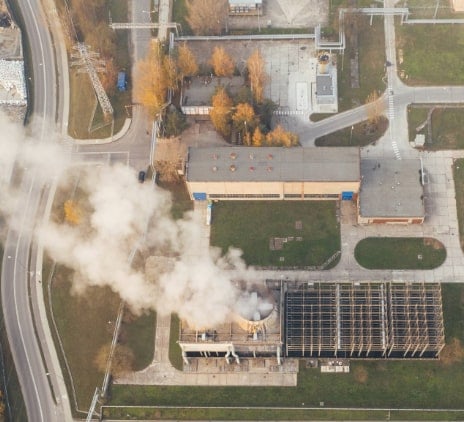-
Accounting Advisory
Our accounting advisory team help businesses meet their complex financial reporting requirements. The team can support in applying new financial reporting standards, IFRS/ US GAAP conversions, financial statement preparation, consolidation and more.
-
Payroll
Our team can handle your payroll processing needs to help you reduce cost and saves time so that you can focus on your core competencies
-
Managed accounting and bookkeeping
Outsourcing the financial reporting function is a growing trend among middle market and startup companies, as it provides a cost-effective way to improve the finance and accounting function. Our team can help with financial statement preparation, consolidation and technical on-call advisory.
-
Accounting Advisory
Our team helps companies keep up with changes to international and domestic financial reporting standards so that they have the right accounting policies and operating models to prevent unexpected surprises.
-
Crypto Accounting Advisory Service
Our team can help you explore appropriate accounting treatment for accounting for holdings in cryptocurrencies, issuance of cryptocurrencies and other crypto/blockchain related accounting issues.
-
ESG Reporting and Accounting
As part of our ESG and Sustainability Services, our team will work with you on various aspects of ESG accounting and ESG reporting so that your business can be pursue a sustainable future.
-
Expected Credit Loss
Our team of ECL modelling specialists combine help clients implement provisioning methodology and processes which are right for them.
-
Finance Transformation
Our Finance Transformation services are designed to challenge the status quo and enable your finance team to play a more strategic role in the organisation.
-
Managed Accounting and Bookkeeping Services
Outsourcing the financial reporting function is a growing trend among middle market and startup companies, as it provides a cost-effective way to improve the finance and accounting function. Our team can help with financial statement preparation, consolidation and technical on-call advisory.
-
Business Tax Advisory
Our business tax team can help you navigate the international tax landscape, grow through mergers and acquisitions, or plan an exit strategy.
-
Corporate Finance
Our corporate finance team helps companies with capital raising, mergers and acquisitions, private equity, strategic joint ventures, special situations and more.
-
Financial Due Diligence
From exploring the strategic options available to businesses and shareholders through to advising and project managing the chosen solution, our team provide a truly integrated offering
-
Valuations
Our valuation specialists blend technical expertise with a pragmatic outlook to deliver support in financial reporting, transactions, restructuring, and disputes.

-
Sustainability with the ARC framework
Backed by the CTC Grant, businesses can tap on the ARC Framework to gain access to sustainability internally, transform business processes, redefine job roles for workers, and enhance productivity. Companies can leverage this grant to drive workforce and enterprise transformation.

-
Business Tax Advisory
Our business tax team can help you navigate the international tax landscape, grow through mergers and acquisitions, or plan an exit strategy.
-
Corporate Tax Compliance
Our corporate tax teams prepare corporate tax files and ruling requests, support you with deferrals, accounting procedures and realise tax benefits.
-
Tax Governance
Our Tax Governance Services are designed to assist organisations in establishing effective tax governance practices, enabling them to navigate the intricate tax environment with confidence.
-
Goods and Services Tax
Our GST team supports organisations throughout the entire business life-cycle. We can help with GST registration, compliance, risk management, scheme renewals, transaction advisory and more.
-
Transfer Pricing
Our Transfer Pricing team advises clients on their transfer pricing matters on and end-to-end basis right from the designing of policies, to assistance with annual compliance and assistance with defense against the claims of competing tax authorities.
-
Employer Solutions
Our Employer Solutions team helps businesses remain compliant in Singapore as well as globally as a result of their employees' movements. From running local payroll, to implementing a global equity reward scheme or even advising on the structure of employees’ cross-border travel.
-
Private Client Services
Our private client services team provides a comprehensive cross section of advisory services to high net worth individuals and corporate executives, allowing such individuals to concentrate on their business interests.
-
Welfare and benefits
We believe that a thriving team is one where each individual feels valued, fulfilled, and empowered to achieve their best. Our welfare and benefits aim to care for your wellbeing both professionally and personally.
-
Career development
We want to help our people learn and grow in the right direction. We seek to provide each individual with the right opportunities and support to enable them to achieve their best.
The latest global survey findings from our International Business Report (IBR) shows that despite the rise of automation and record global business optimism (net 58%) businesses will turn to people in 2018 to meet swelling order books. Plans to hire more workers are at their highest level in a decade. However, we warn that, with economic indicators pointing to a potential peak in the business cycle, businesses need to balance their investment decisions and take steps to boost productivity.
What stands out is the dramatic nature of the rise in businesses planning to employ more workers – up 11 percentage points on a year ago – to net 40% from 29%. Every region, globally, has reported a year-on-year increase in employment expectations.
The desire to expand workforces comes amid healthy levels of demand, as the proportion of firms concerned about a shortage of orders falls to net 23% globally – the lowest figure recorded in a decade of IBR research. Firms are feeling confident enough to raise prices, with net 36% of firms planning to do so over the next 12 months, while net 50% of firms expect higher profits compared to net 41% a year ago.
The IBR also finds that businesses are continuing to boost their investment in plant and machinery in 2018, with net 36% saying this is the case - a rise of 3pp from a year ago. However, this relatively flat pace of growth contrasts with the figures for employment. In the US, net 49% of firms plan to expand their workforce, compared to net 39% who will spend more on plant and machinery. Meanwhile, increased investment in technology has eased during Q4 to net 44% from net 47% in Q3 2017.
Meeting growing demand
Francesca Lagerberg, Global Leader Network Development at Grant Thornton, commented:
“Despite talk of the rise of the machines, the easiest and quickest way for many businesses to meet growing demand is by hiring more people to boost capacity. However, padding out the workforce is only a stop-gap solution. As unemployment falls, it will become even harder to recruit the quantity and quality of workers needed to maintain and grow productivity.
“Instead, business processes will need to become more efficient. While firms are still investing marginally more in plant and machinery, investment in technology has fallen back in the past three months. This overall change in momentum – away from tech and towards human capital – is a potential cause for concern at a time when technology offers companies one of the greatest competitive weapons.
“Optimism is soaring and expectations for increased profits are at their highest since before the global financial crisis. Firms must avoid short-termism and increase their investment in long-term growth. If they don’t, the party in 2018 could leave a hangover in 2019.”
Major economies boost confidence
The world’s three biggest economies are major drivers of the prevailing confidence. In the US, business optimism is at net 79%, compared to net 54% a year ago. In China, optimism is at its highest in ten years (net 78%), while Japanese firms are in positive territory for the first time in nearly three years at net 3%.
The year-on-year increase in business sentiment is evident among the vast majority of the countries surveyed. By far the biggest fall has been recorded in the UK, where business optimism fell to net 12% compared to net 26% a year ago.
Francesca Lagerberg added:
“There are signs that 2018 marks the peak of the business and economic cycle. The US is expected to increase its interest rate further, which means the cost of borrowing will rise for many businesses. At the same time, inflationary pressure is a strong possibility, with wages and prices also increasing. Forecasts suggest that global GDP will fall away from 2019 onwards.
“What can businesses do to make the most of the current environment, but make sure the music doesn’t stop at the end of this year? A better balance in where they invest will be critical. Hiring more workers has many benefits, but if investment in technology, plant and machinery doesn’t keep pace, those workers will become less efficient and profits will steadily erode.
“The move towards automation represents a threat to many traditional business models. But it also presents opportunities. Dedicated investment in technology will help businesses become more productive and boost resilience. Firms that get this right over the next year will be best placed to succeed when the global economy comes off its current high.”
The key data highlights from our survey see:
- Net 40% of businesses plan to employ more workers in 2018 (compared with a net 29% 12 months ago)
- Net 36% plan to invest more in plant and machinery (net 33% 12 months ago)
- Global business optimism is at its highest ever level at net 58%
- The number of businesses expecting to see both prices (net 36%) and profitability (net 50%) rise have also reached new global highs.

